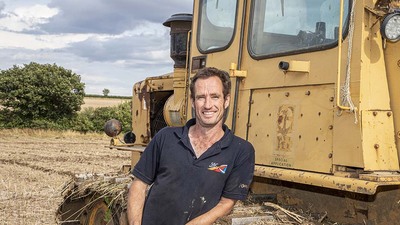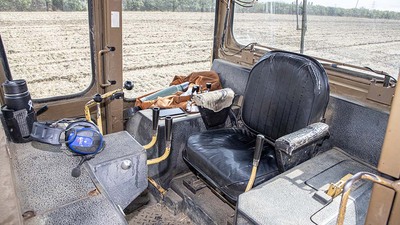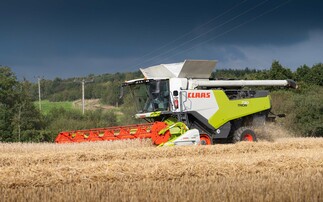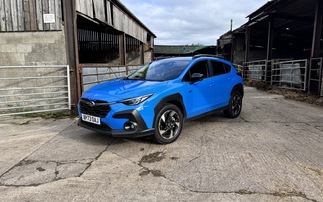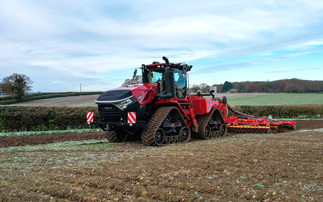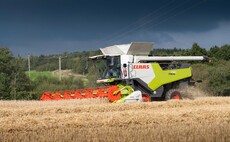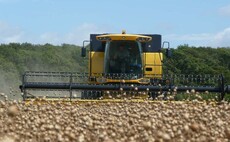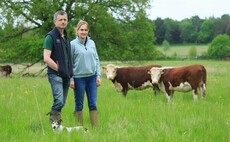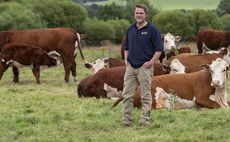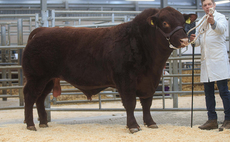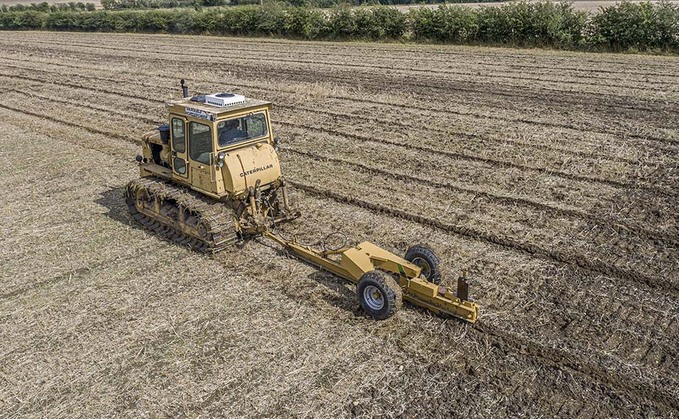
Rubber-tracked tractors might dominate the arable sector, but there is still a useful role for steel-tracked machines. Geoff Ashcroft visits a Suffolk contractor who says it is all about traction.
By his own admission, Suffolk contractor Dave Williams reckons a rubber-tracked tractor would probably make more business sense than a steel-tracked classic.
But the fact remains there is little which can get close to a steel-tracked crawler when it comes to traction.
He says: "I should probably be running a Cat 75 or 85 flat-track machine for the benefit of more comfort and convenience, though my Cat D6D would pull one around backwards all day long. The traction is immense and it just does not slip and slide to a halt after a shower of rain."
The biggest downside to steel tracks is moving the machine around from farm to farm and absorbing the downtime it takes to achieve. It is a task comfortably managed by his Valtra T170 with an air-braked tri-axle low-loader trailer, simplifying the task.
D. Williams Services, based near Stowmarket, Suffolk, carries out mole draining and winter ploughing for local growers, alongside his general contracting and engineering work.
After some weekend contracting a few years back with a Track Marshall TM155, which he co-owned with his farming brother-in-law, numbers were crunched and a business opportunity was seized.
Fortunately, year-on-year growth proves the demand still exists for Mr Williams' post-harvest services, fuelling his passion for steel-tracked crawlers.
He says: "I saw an opportunity, then spent some time finding the right tractor for the job."
That was almost four years ago and, since then, he has never looked back. His machine of choice is a variable horsepower 1985 Caterpillar D6D Special Applications (SA) tractor, which has just 8,300 hours on its clock.
The 13-tonne steeled tracked machine does have air-conditioning, but that is about it when it comes to creature comforts. The fuel gauge, for example, is a plastic sight-glass on the fuel tank, with an in-tank steel dipstick used as a back-up to monitor the 400-litre tank as it is sucked dry every 12 hours.
Sold by former Cat dealer Levertons, the SA was developed specifically for agricultural work and offers a swinging drawbar on which the lower section of a three-point linkage is sat. It too can swing left to right, affording a degree of steering when in work.
Hydraulic services include two double-acting spools and one single-acting valve, backed up by a generous flow rate, and a hydraulic top-link plugs into one of the spools to suit adjustment of mounted and semi-mounted implements.
Mr Williams says: "Hydraulics are a bit rudimentary by modern standards, but it packs a punch. There is a huge amount of hydraulic performance and flow, and getting the best from the manual spools demands a high degree of finesse when tugging the levers."
As a variable horsepower model, the D6D's 3306 Caterpillar six-cylinder engine provides 160hp in its first two gears and 212hp its remaining four faster ratios.
All except sixth gear are available in reverse, affording simple shuttle movements through a mechanical lever when making headland turns. A hand-clutch, with integral transmission brake, controls the twin-plate wet clutch for selection of ratios in the constant mesh gearbox. It also affords selection of forward-reverse travel, achieved using yet another lever.
There is no traditional decelerator on the floor, but a hand throttle is used to set and vary engine revs. In addition, left- and right-hand steering clutches and corresponding brake pedals are used to steer the tractor. Running a D6D in anger is not for the feint-hearted.
Mr Williams says: "There is no GPS guidance, no suspension, no CVT transmission, no programable spool valves or adjustable flow rates, but there is plenty of grunt."
Most of his summer workload is mole draining, using a single-leg Miles mole plough. And working at 2.7 metres centres calls for old-school driving skills.
He says: "There is a bolt on each outside edge of the bonnet, which I use as a gun sight and line-up with the previous run's track marks, and that gives me a near-perfect spacing when mole draining."
He adds that a friend is currently devising an app to provide basic A-B line guidance, which could be used on his smartphone.
He says: "It would be really useful to make wide, gentle turns on the headland, to avoid stopping, reversing and pulling back into work. It would bring more productivity for less effort, but it is too much guess work to just put that into practice without some form of electronic guidance."
Mr Williams' choice to run a 36-year-old D6D is backed up by the tractor's endless engineering prowess and heavy-duty structure.
He says: "This is a tractor which was designed to be repeatedly rebuilt. Parts availability is unquestionable and every aspect of the tractor can be replaced. It will last me a lifetime; I will never wear it out."
Operational reliability is so far living up to expectations, with some undercarriage costs recently incurred to get the D6D back into rude health. Track chains have recently been replaced by new sealed and lubricated items, along with bolt-on drive sprocket segments to ensure ongoing reliability.
Mr Williams says renewing the track chains contributed to a considerable reduction with in-cab noise level, which is managed further using a set of Peltor ear protectors with integral Bluetooth capability.
Every track plate has also received an intermediate repair to prolong the lifespan of the grousers, gaining a strip of steel, welded into place to increase cleat height.
For those extreme post-sugar beet winter ploughing conditions, Mr Williams has a set of 12 specially modified track plates which carry an extended 125mm cleat. These can be bolted on to the track chains in place of a few standard grousers to provide extra grip when operating in less than ideal conditions.
Unfortunately, a final drive issue manifested itself shortly after the tractor was put into work, requiring a strip-down and repair to the right-hand hub.
In addition, Mr Williams has added LED front and rear work lights to improve upon the 1980s yellow hue of halogen bulbs and he has relocated the air conditioning system's evaporator from its factory location in front of the radiator to the top of the cab roof.
He says: "The cooling fan pushes warm air out of the front of the tractor, which is a really good idea. It pulls warm air from the engine, rather than pushing it onto the cab, and this avoids super-heating the cab and the lower front windows."
While the lion's share of the workload is currently mole draining, clocking up about 400 hours per year, Mr Williams also has an eight-furrow, semi-mounted Dowdeswell DP2 plough for use with the crawler.
Its 14in furrows prove easy to handle with the 212hp machine, even on Suffolk clay. The front end of the plough is carried on the linkage, leaving the rear depth wheel to be raised and lowered on a spool valve.
Once the working depth is set using the hydraulic top link, Mr Williams puts the linkage into float, which lets the tracks sit flat on the ground for maximum traction.
He says: "It is a dead-pull. Anything which involves weight transfer does compromise performance and ground pressure."
He says a 2t ballast block is available for the nose of the D6D, which is added or removed to suit the task. He says the tractor sits naturally with a nose-heavy stance until it starts to pull.
"When the crawler does pull hard, the front of the tractor can walk about a bit if there is not enough weight on the nose. You do have to drive it - you are not along for the ride and it will not drive itself. But when my farming friends park up their rubber-tracked machines after a shower of rain, my old D6D keeps on working.
"And it will probably still be working when those other tractors have been sold or scrapped."
